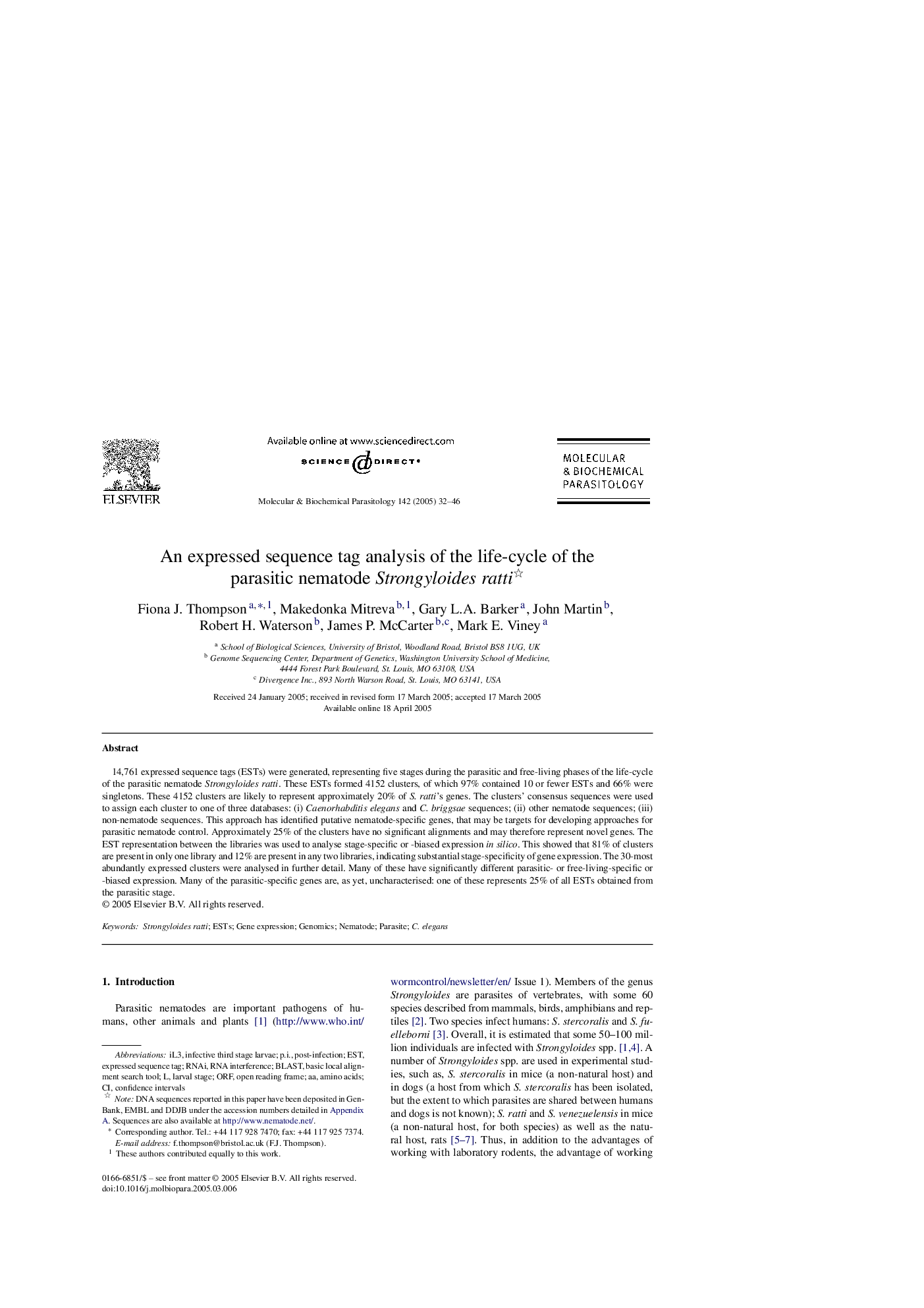| Article ID | Journal | Published Year | Pages | File Type |
|---|---|---|---|---|
| 9140019 | Molecular and Biochemical Parasitology | 2005 | 15 Pages |
Abstract
14,761 expressed sequence tags (ESTs) were generated, representing five stages during the parasitic and free-living phases of the life-cycle of the parasitic nematode Strongyloides ratti. These ESTs formed 4152 clusters, of which 97% contained 10 or fewer ESTs and 66% were singletons. These 4152 clusters are likely to represent approximately 20% of S. ratti's genes. The clusters' consensus sequences were used to assign each cluster to one of three databases: (i) Caenorhabditis elegans and C. briggsae sequences; (ii) other nematode sequences; (iii) non-nematode sequences. This approach has identified putative nematode-specific genes, that may be targets for developing approaches for parasitic nematode control. Approximately 25% of the clusters have no significant alignments and may therefore represent novel genes. The EST representation between the libraries was used to analyse stage-specific or -biased expression in silico. This showed that 81% of clusters are present in only one library and 12% are present in any two libraries, indicating substantial stage-specificity of gene expression. The 30-most abundantly expressed clusters were analysed in further detail. Many of these have significantly different parasitic- or free-living-specific or -biased expression. Many of the parasitic-specific genes are, as yet, uncharacterised: one of these represents 25% of all ESTs obtained from the parasitic stage.
Keywords
Related Topics
Life Sciences
Biochemistry, Genetics and Molecular Biology
Molecular Biology
Authors
Fiona J. Thompson, Makedonka Mitreva, Gary L.A. Barker, John Martin, Robert H. Waterson, James P. McCarter, Mark E. Viney,
